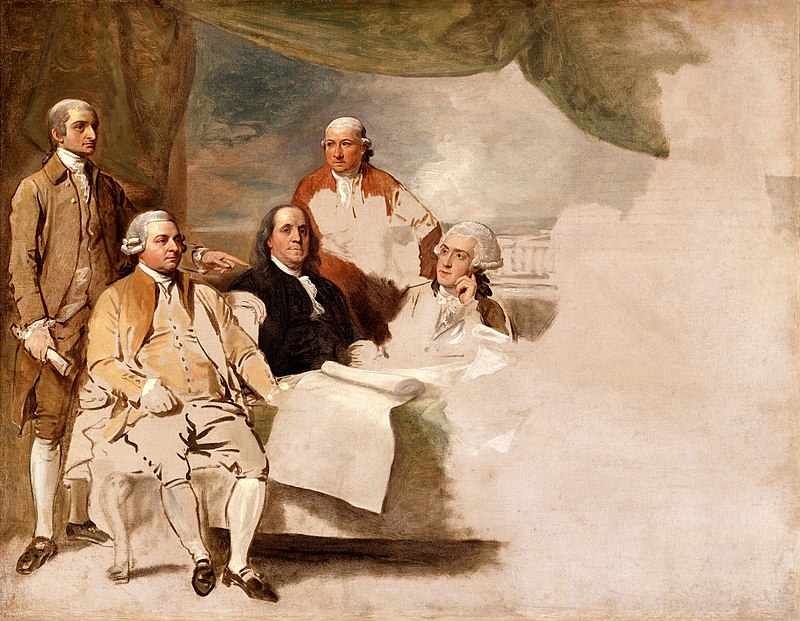The Uprising That Helped Create Washington D.C.

The American Revolutionary War, officially, lasted from 1775 until the signing of the Treaty of Paris in September of 1783. But for the most part, the fighting ended long before the official end of the war. The last major battle of the American Revolution, known as the Siege of Yorktown, came to a close in October of 1781. But because of the treaty negotiations, the Continental Army — America’s military during the war — did not disband until 1783. Unfortunately for those who served their new country, their service didn’t pay well. Not only were wages low to begin with, but they often went unpaid. And in 1781, that led to a problem for the fledgling federal government.
And, indirectly, to the creation of Washington, DC.
Starting in March of 1781, the 13 American states were collectively organized under the Articles of Confederation, a precursor to the Constitution. Under the Articles, Congress — at the time called the “Congress of the Confederation” was not allowed to tax the citizen or the member states; while it could ask the states for money, the states were free to refuse (and often did). It could pass laws as well, but only limited ones, and it could not enforce those laws without unanimous support from the 13 member states. It quickly became clear that the Articles did not provide the government with the tools needed to govern.
And yet, Congress was on the hook for many of the outstanding war debts, including payments to the soldiers who were still serving their country. On June 17, 1783, Congress was in session in Philadelphia, which was the nation’s capital at the time. And for about 80 servicemembers stationed in Lancaster, Pennsylvania — about 60 miles from Philly — and another few hundred stationed in Philadelphia itself, that provided an opportunity. All it required was some light treason.
On the morning of January 20, 1783, about 400 soldiers, armed, arrived at what is now called Independence Hall, the building in which the Congress of the Confederation met. The soldiers took over the building and refused to let the members of Congress leave, at least at first. Alexander Hamilton, then a delegate from New York to Congress, convinced the soldiers to give Congress more time to find a resolution, and they agreed, but Hamilton didn’t use the additional time to address the issue. Rather, he and a committee of other delegates, according to the House of Representatives website, “demanded that [John] Dickinson, [the President of Pennsylvania at the time (effectively, the governor)] mobilize loyal militia to quash the insurrection.” Dickinson declined, stating that the soldiers were to that point nonviolent and he did not want to provoke them. A day or two later, Congress again appealed to Dickinson for help, and again, Dickinson refused to order Pennsylvania’s militia to intervene. They sent a letter to George Washington (here), who was still commanding the Continental Army, asking for help, but that response would take days. Congress, fearing for their lives, fled to Princeton, New Jersey.
Ultimately, Washington sent 1,500 troops to Philly to put down the rebellion and arrest the ringleaders. But the damage was done — the federal government realized that they could not rely on state governments to protect them during times of civil unrest. When delegates convened in 1787 to write a new constitution, the events of the winter of 1783 — by then called the “Philadelphia Mutiny” — were still fresh in their minds. As the website of the Constitutional Walking Tour nicely summarizes, “the Constitution did not stipulate the location of the capital, but it did state clearly that it would be located in its own Federal District and provide for its own protection, ensuring they’d never again have to depend on the state the capital was located within to protect the Federal Government.” That district, ultimately, would be Washington DC.
Bonus fact: The image at the top of this email is from the negotiations of the Treaty of Paris; with the American delegation — John Jay, John Adams, Benjamin Franklin, Henry Laurens, and William Temple Franklin — pictured. But the image is very clearly incomplete; that’s because the British delegation refused to pose for the portrait. Artist Benjamin West decided to omit the British from the picture, even though he probably could have found another solution; Franklin, you may note, looks different from the others — that’s because he didn’t pose for the portrait, either. West used an engraving of Franklin as the basis for this depiction.
From the Archives: Capital for a Day: Lancaster, PA’s other role in the American process of selecting a capital city.
